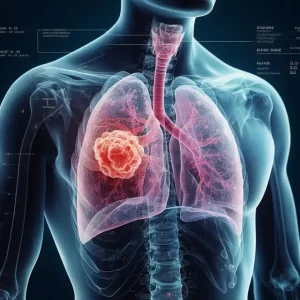World first pig heart transplant: The patient died after two months
- EPA Announces First-Ever Regulation for “Forever Chemicals” in Drinking Water
- Kochi University pioneers outpatient bladder cancer treatment using semiconductor lasers
- ASPEN 2024: Nutritional Therapy Strategies for Cancer and Critically Ill Patients
- Which lung cancer patients can benefit from neoadjuvant immunotherapy?
- Heme Iron Absorption: Why Meat Matters for Women’s Iron Needs
- “Miracle Weight-loss Drug” Semaglutide Is Not Always Effective
World first pig heart transplant: The patient died after two months
- Red Yeast Rice Scare Grips Japan: Over 114 Hospitalized and 5 Deaths
- Long COVID Brain Fog: Blood-Brain Barrier Damage and Persistent Inflammation
- FDA has mandated a top-level black box warning for all marketed CAR-T therapies
- Can people with high blood pressure eat peanuts?
- What is the difference between dopamine and dobutamine?
- How long can the patient live after heart stent surgery?
World first pig heart transplant: The patient died after two months.
On March 9, the University of Maryland Medical Center issued a statement saying that the world’s first heart patient to receive a genetically modified pig heart, Maryland resident David Bennett (David Bennett) died on March 8.
Bennett received the transplant on January 7, and the pig heart was beating in his body for more than two months.
Previously, the reporter sent an interview email to the media liaison of the University of Maryland Medical Center regarding Bennett’s survival after surgery, but received no response.
In response to Bennett’s death on March 9, Muhammad M. Mohiuddin, professor of surgery and scientific director of the Cardiac Xenotransplantation Program at the University of Maryland, expressed his gratitude to Mr. Bennett for his contributions to the field of xenotransplantation. The unique and historic role played, and said that clinical trials will continue in the future.
Special permission for surgery, patient says ‘do a transplant or die’

Dr. Griffith and patient Bennett performing surgery Photo/University of Maryland Medical Center
“We are devastated by the passing of Mr. Bennett. He proved to be a brave and noble patient who fought to the very end. Our sincerest condolences go out to his family.” The medical doctor who led the transplant team Dr. Bartley P. Griffith said, “Mr. Bennett is known to millions of people around the world for his courage and determination to live.”
It is understood that Bennett suffers from arrhythmia, the disease has entered the terminal stage, and cannot maintain normal heart and lung function without relying on machines. Furthermore, he did not wait for a human heart to be transplanted until the surgery. “I either do this transplant or die. I want to live. I know it’s like shooting in the dark, but this is my last chance,” Bennett said the day before the surgery.
The reporter learned that even in the United States, the xenotransplantation technology between different organisms has not been licensed for use, but according to the “compassionate use” provisions of the US Food and Drug Administration (FDA), when patients face This provision applies when there is a serious or life-threatening medical condition for which experimental therapy is the only option to save the patient’s life.
On New Year’s Eve 2022, Bennett received special clearance from the FDA to receive a pig heart transplant. On January 10, local time, the University of Maryland Medical Center issued a document saying that three days after the transplant, the heart still performed well, “This organ transplant is the first proof that the heart of a genetically modified animal can function like a human heart without immediate Rejected by the body.”
Some people engaged in medical research told Shell Finance reporters that the results of this experimental therapy are unpredictable, “the biggest risk factor comes from transplant rejection, and transplants such as foreign tissues or organs will be accepted as a “foreign component”. The patient’s immune system recognizes that the immune system has the potential to mount an immunological response to attack, destroy, and clear the graft. The first 48 hours after transplantation, also known as the hyperacute rejection period, may be ischemia or necrosis of the organ.”
In fact, this pig heart is not completely pig heart in the traditional sense, but has been genetically edited. The University of Maryland Medical Center said it made 10 unique gene edits in donor pigs — knocking out three genes that cause immune rejection and one that causes overgrowth of heart tissue, and 6 genes from human were inserted.
On the morning of the transplant, the surgical team, led by Griffiths and Mohiddin, removed the pig’s heart and placed it in the XVIVO Cardiac Cartridge Perfusion Set, a machine that preserves the heart until surgery. The doctor also prescribed an anti-rejection drug.
In the end, the operation was a success, and three days after the surgery, the heart was still doing well, according to a release from the University of Maryland Medical Center.
After the surgery, the transplanted heart performed well for a few weeks without any signs of rejection, the University of Maryland said. Patients are able to spend time with their families and participate in physical therapy to help with recovery. He watched the Super Bowl TV show with his physical therapist and often talked about wanting to go home with his dog.
Responding to Bennett’s death, Griffiths said, “As with any first transplant in the world, this one has brought valuable insights that will hopefully inform transplant surgeons to improve outcomes and potentially lead to better outcomes for transplant surgeons. Provides life-saving benefits to future patients.”
Xenotransplantation to solve the crisis of organ shortage, researchers say the trial will continue in the future
According to the University of Maryland Medical Center, the reason for the study of transplanting pig hearts to humans is because of the scarcity of organs to be transplanted.
According to the World Health Organization (WHO), less than 10% of the world’s organ transplant needs are met each year. Currently, there are about 110,000 patients in the United States waiting for an organ transplant, and more than 6,000 patients die each year before receiving an organ transplant.
The University of Maryland believes that through xenotransplantation, it will be possible to revolutionize the field of transplantation by eliminating the organ shortage crisis.
In the early 20th century, scientists tried xenotransplantation of primates such as orangutans and baboons, which are closely related to humans.
For example, in 1984, a baby girl named Stephanie Fae Beauclair in the United States became the first to receive a xenogeneic organ after receiving a heart from a baboon due to hypoplastic left heart syndrome. Transplanted baby. But just 21 days later, she died of immune rejection.
However, with the advent of gene editing technology, the direction of xenotransplantation has also changed, and researchers have gradually turned their attention to pigs with more abundant organ sources, large litter sizes, and fast maturation.
It is understood that pig corneas can already be successfully transplanted to humans. Pig corneas have no blood vessel supply and do not need to be matched. The success rate of the operation is as high as 90%.
The three-dimensional structure of the cornea is transplanted to the human eyeball to form a new corneal tissue after a special process. Now it is clinically used mainly because of the lack of human donated corneas in China, and many patients do not have the opportunity to Getting a human cornea transplant is the next best thing.”
In addition to porcine corneas, porcine heart valves have also been successfully used in clinical practice. However, the transplant of a pig heart is the first in the industry.
On March 9, Mohyeddin said, “We have gained valuable insights that the genetically modified pig heart can function well in humans, while the immune system is fully suppressed, and we remain optimistic and plan to Continue our work in future clinical trials.
The world first case: Pig heart transplanted to human
World first pig heart transplant: The patient died after two months
(source:internet, reference only)
Disclaimer of medicaltrend.org
Important Note: The information provided is for informational purposes only and should not be considered as medical advice.



